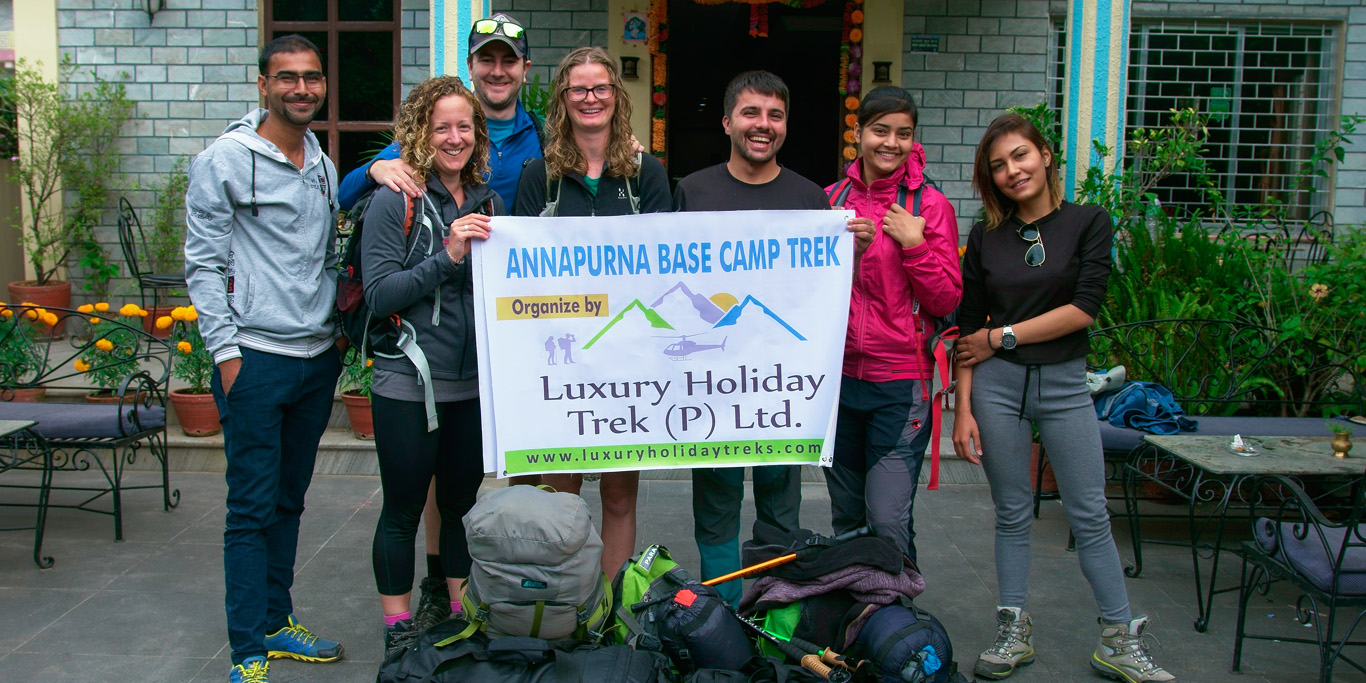Meandering roads, kid on a steering wheel and world’s best samosas: A voyage in Nepal!
October 13, 2019 admin

In May this year, my daughter Alex accompanied me to Annapurna base camp, which is 4,130 metres above sea level. The eight-day trek was tough and challenging at times, but equally rewarding.
Since the early 1980s, I had been planning to travel to Nepal to trek along the famous Annapurna Base Camp, but it never eventuated. Until now, that is.
In May this year, my daughter Alex accompanied me to Annapurna base camp, which is 4,130 metres above sea level. The eight-day trek was tough and challenging at times, but equally rewarding.
That slice of Shangri-la that I had always dreamt of was finally realised after I found myself lost amongst the purity of Himalayas, with beautiful villages and people.
It’s an eye-opening journey, to say the least. The arrival at Tribhuvan International Airport in the capital Kathmandu can be a daunting experience for many.
We spend a couple of days in Kathmandu before heading to Pokhara, the country’s second-largest city and the gateway for the Annapurna circuit.
In Kathmandu, I do not notice any traffic lights or road rules. How the traffic still manages to flow is quite intriguing.
We move around the World Heritage-listed Hindu temple Pashupatinath, located along the banks of the Bagmati river in the capital.
Only Hindus are allowed inside the temple premises, but visitors can go around the site and watch open cremations taking place along the river – a sight that can be disturbing – to some visitors.
We hit the road to get to Pokhara, a beautiful town west of Kathmandu.
The trip is around eight hours long and takes us through some of the spectacular views of rivers and mountains. Some of the extremely narrow sections of the road and sharp bends keep us awake for the whole journey.
Once in Pokhara, we meet a few Australians who say they’re regular visitors to the country and are already planning to come back for their next trip.
Finally, the much-awaited trek to Annapurna Circuit begins. The lowest elevation point of the circuit is less than 1,000 metres above the sea level, and the highest point is around 5,400 metres.
We head to Nayapul in the morning and follow the river. Nayapul is the last town where all the supplies are off-loaded from Pokhara. The supplies are then transported on foot to many of the teahouses in the Annapurna region.
Some of the rural shops along the way have excellent food, including the samosas I eat in a village called Birethanti. I would later go back to the same shop on my way back to Pokhara.
Birethanti clearly is the samosa capital of the world.
The start of the trek is challenging. We take stairs with 4000 steps to get to the village of Ulleri and finish the day at the town of Ghorepani, which is at 2,874 metres above the sea level. This village is a little remote and locals use mules as a mode of transport to carry supplies and building materials.
The next day is extraordinary. We go to Poon Hill, one of the best vantage points to watch the sunrise along the Annapurna mountain range.
Despite having to wake well before four in the morning to get there, the sight of the glorious sunrise is an enriching experience. Seeing Dhaulagiri, Annapurna 1, South Annapurna and the Machhapuchhre mountains in their glory is simply magical.
We keep trekking straight down the Chomrong River while passing through several villages, where the main crops are barley, potato, maize, along with many cows and goats.
Our tour guide and the porter share the same name, Raj, and they are our medium to understand the local culture.
During the trek, I am surprised local teahouses offer Internet services, even in the remote locations like Machapuchhre Base Camp (MBC). But then again, spending time on the internet while being in this part of the world is not what the trip is about.
We take a bus to Nayapul from a village called Kyumi.
The bus is allowed to carry 34 passengers, but at different stages of the journey, more than 50 people are aboard.
The bus driver had his kids around him, with his four-year-old sitting on his lap helping him to change gears and sometimes even steering. The road is challenging enough, and now the young driver frightens us.
The relief upon reaching Nayapul is immense!
I notice a few passengers climbing down from the roof of the bus as I get off. I had no idea that people were up on the roof of the bus.
Finally, we arrive back in Pokhara, and after a couple of days rest, we go paragliding. I am a bit surprised with myself for not being nervous, and it turns out the take-off does not sap much energy. Just follow the instructions: walk, run, sit – and next thing I’m up in the air. However, I lose one of my shoes as Manish, my flight instructor, steps on it mid-air.
I am up, flying in the air with only one shoe.
We fly back to Kathmandu (in a plane) where we rest a day before flying home, sampling more Nepali food in Thamel, an area buzzing with trekkers, and watching some Nepali dance performance.
Before leaving the country, I still have a few Nepali Rupees, thinking I may buy something duty-free, but TIA’s duty-free shops have few options.
My Nepal trip was a great experience. I loved the people, loved the culture, and I encourage others to go and visit this beautiful country.
Who knows, the spare change I still have may one day be spent on samosas back in Birethanti.
Author/Source : Michael Scott










